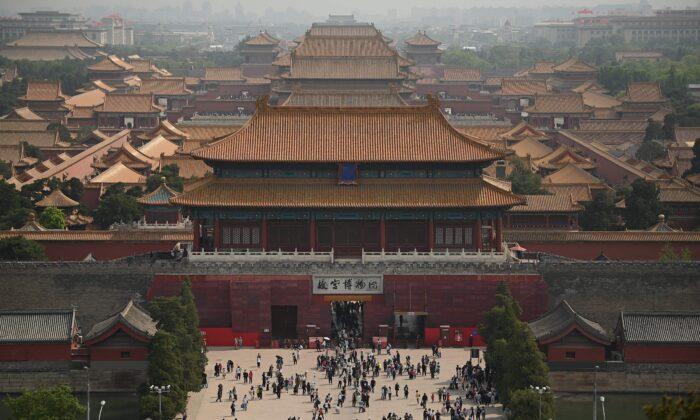Missing from U.S. Trade Representative Katherine Tai’s recent statement on the Biden administration’s new U.S. trade policy was any mention of the country’s single most important trade problem—the annual U.S. trade deficit.
It will be well over $800 billion by the end of the year, and this will be the 45th consecutive year in which the United States has accumulated a trade deficit. The total of those accumulated deficits is now about $15 trillion, or close to 70 percent of U.S. gross domestic product. It’s important to understand that those dollars are not just pieces of paper that just get transferred from America to Europe, or Asia, or elsewhere. They’re a claim on U.S. assets, and thus a transfer of wealth from America to the governments and citizens of other countries, particularly China.
In international accounting, there’s a calculation known as national net investment position, which shows how much country A’s investors own in foreign assets compared to how much foreign investors own in country A’s assets. Until about 1990, the United States was the country with the largest net investment surplus, meaning it owned far more in foreign assets than foreign investors owned in U.S. assets. Today, the United States is by far the largest net debtor. Effectively, over the past 40 years, America has transferred an enormous portion of its wealth to foreign interests through its chronic trade deficit.
This has undermined U.S. economic and strategic power and influence substantially. By moving production of many critical goods out of the United States to Europe, Asia, and elsewhere, it has made America highly dependent on foreign suppliers and has effectively put the chief executives of many global U.S. corporations in thrall to foreign powers—especially to China and its leader Xi Jinping. Consider that the world’s most valuable corporation, Apple, makes all its products in China. Consequently, Apple CEO Tim Cook is far more concerned about what Xi has to say than about what U.S. President Joe Biden might say, despite the fact that, legally speaking, Apple is a U.S., rather than a Chinese, corporation.

Not Intended or Expected
When today’s global economic system was established in the wake of World War II, the current chronically unbalanced structure was not only unanticipated but was explicitly posed as a target to be avoided. The great economist John Maynard Keynes even went so far as to call for the new International Monetary Fund to be empowered to impose punitive tariffs on the exports of countries with chronic trade surpluses in order to force them into balanced trade over the medium to long term.Keynes’ great adversary on the role of the state in running the economy, Friedrich Hayek, agreed that balanced trade had to be the long-term objective. Indeed, he couldn’t imagine that market forces would eventually lead in any direction except that of balanced trade.
Causes of Trade Imbalance
The chronic imbalance is due to two primary causes. One is the fact that the U.S. dollar is the main global reserve currency. This means that virtually all countries keep the bulk of their financial reserves and do the bulk of their international business in dollars. This constant demand for dollars drives the dollar exchange rate up, resulting in a strong dollar and thus high prices for U.S. exports and low prices for imports, which results in chronic U.S. trade deficits.
Solutions
The continuation of these policies and practices will eventually ruin both the United States and the global economies. To avoid such ruin, a major shift in U.S. policies will be required. One key element of such a shift could be a market access fee to be imposed on all U.S.-bound foreign investment that isn’t aimed at constructing new factories and equipment for production in the United States (so-called green field investment). The fee could vary according to the amount of the U.S. trade deficit, but would probably range from 1 to 5 percent of the amount of inward investment.Another important element would be the creation of a U.S. government fund to subsidize and encourage domestic investment in production facilities in key leading-edge industrial and technological production industries. Instead of “Made in China 2025,” it would be “Made in America 2030.” The investors might well be non-American, but the production would have to be done in the United States.
Finally, if it’s necessary to assure a balanced current account, the importers of goods and services into the United States would be required to bid for import rights, whose amount would exactly equal that of the U.S. current account deficit, thereby assuring not only balanced trade for the United States, but for the world at large. After all, it was the original idea at the time of the founding of the global trading system.





